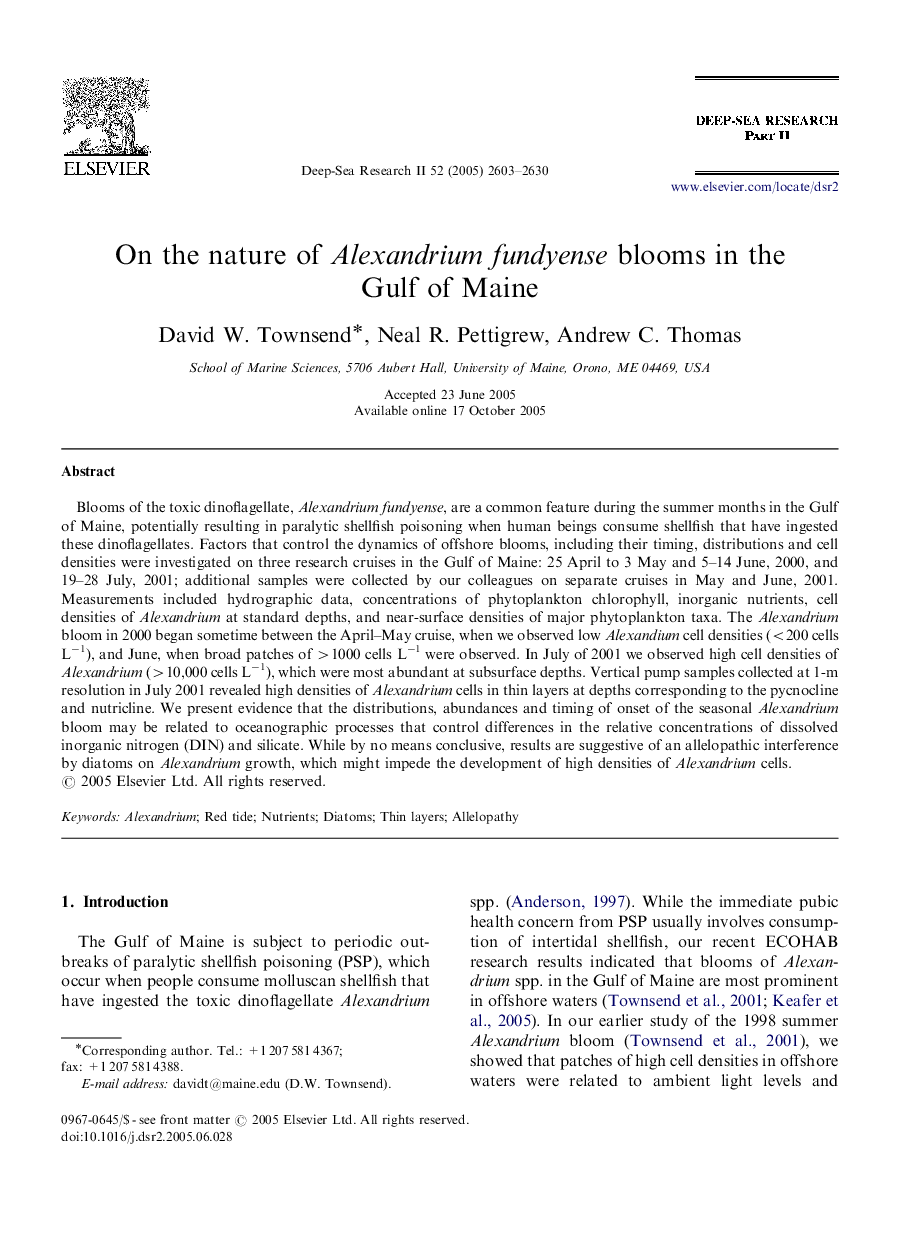| Article ID | Journal | Published Year | Pages | File Type |
|---|---|---|---|---|
| 4538586 | Deep Sea Research Part II: Topical Studies in Oceanography | 2005 | 28 Pages |
Blooms of the toxic dinoflagellate, Alexandrium fundyense, are a common feature during the summer months in the Gulf of Maine, potentially resulting in paralytic shellfish poisoning when human beings consume shellfish that have ingested these dinoflagellates. Factors that control the dynamics of offshore blooms, including their timing, distributions and cell densities were investigated on three research cruises in the Gulf of Maine: 25 April to 3 May and 5–14 June, 2000, and 19–28 July, 2001; additional samples were collected by our colleagues on separate cruises in May and June, 2001. Measurements included hydrographic data, concentrations of phytoplankton chlorophyll, inorganic nutrients, cell densities of Alexandrium at standard depths, and near-surface densities of major phytoplankton taxa. The Alexandrium bloom in 2000 began sometime between the April–May cruise, when we observed low Alexandium cell densities (<200 cells L−1), and June, when broad patches of >1000 cells L−1 were observed. In July of 2001 we observed high cell densities of Alexandrium (>10,000 cells L−1), which were most abundant at subsurface depths. Vertical pump samples collected at 1-m resolution in July 2001 revealed high densities of Alexandrium cells in thin layers at depths corresponding to the pycnocline and nutricline. We present evidence that the distributions, abundances and timing of onset of the seasonal Alexandrium bloom may be related to oceanographic processes that control differences in the relative concentrations of dissolved inorganic nitrogen (DIN) and silicate. While by no means conclusive, results are suggestive of an allelopathic interference by diatoms on Alexandrium growth, which might impede the development of high densities of Alexandrium cells.
